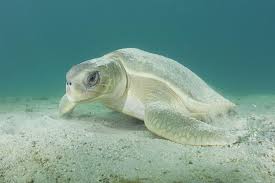
When people think of sea turtles, species like the green, hawksbill, or loggerhead often come to mind. But there’s one lesser-known turtle that deserves just as much attention—the flatback sea turtle. Found only in the waters around Australia, these unique turtles stand out not just for their limited range but also for their distinctive features and behavior. Unlike other sea turtles that migrate across entire oceans, flatbacks prefer to stay closer to shore, navigating the warm, shallow waters of the Indo-Pacific. With their smooth, flattened shells and soft edges, flatbacks are perfectly adapted to life in coastal habitats. They play a crucial role in their ecosystems, yet they remain one of the least studied sea turtle species. From their unusual nesting habits to the threats they face in the wild, flatback sea turtles are full of surprises. Keep reading to learn more about these fascinating marine reptiles and why conservation efforts are so important to their survival.
Appearance
Flatback sea turtles are named for their uniquely flattened, upturned carapace, which sets them apart from other sea turtle species. Their shells are typically a pale olive-green to gray color, while their plastron, or underbelly, is a creamy yellow. Adult flatbacks usually reach about 3 feet in length and can weigh up to 200 pounds, with females being slightly larger than males. Males, however, have longer tails. Both sexes have rounded heads that often match the color of their shells.
One of the most distinctive traits of flatbacks is their unusually thin carapace. Unlike other sea turtles, their shells lack the thick, protective keratin layer, making them more fragile. Even small amounts of pressure, like flapping their flippers against their plastron, can cause injuries. This may explain why flatbacks avoid coral reefs and prefer softer, sandy coastal habitats. Despite their delicate shells, these turtles are well-adapted to their environment, thriving in the warm, shallow waters of Australia.
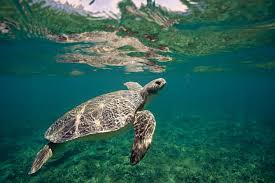
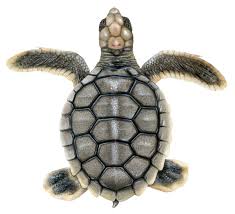
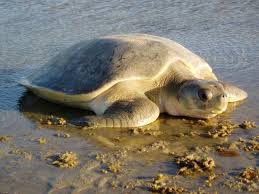
Behavior
Flatback sea turtles exhibit unique behaviors that set them apart from other sea turtles. Unlike most species that undergo a pelagic phase, young flatbacks stay close to shore, avoiding the mysterious “lost year” spent drifting in open waters. Their larger size at hatching—an average carapace length of 60 mm—gives them an advantage over predators like crabs and gulls while also making them stronger swimmers. This strength helps them resist being swept off course by ocean currents, further reinforcing their preference for nearshore habitats.
Both juvenile and adult flatback turtles have fascinating resting behaviors. While young turtles often sleep on the water’s surface, adults seek shelter near rocks or under ledges, where they can remain submerged for hours before needing to surface for air. However, their breath-holding ability is influenced by their state—when stressed or excited, they must surface more frequently. Interestingly, flatbacks are often seen floating at the surface, possibly basking in the sun, with seabirds occasionally perching on their backs. These behaviors, though not fully understood, highlight the distinct and intriguing nature of flatback sea turtles, emphasizing the need for further research into their ecology and life history.


Diet
Flatback sea turtles are primarily carnivorous, feeding in shallow, soft-bottomed waters where they forage for a variety of marine invertebrates. Their diet includes sea cucumbers, jellyfish, sea pens, mollusks, shrimp, crabs, and other soft-bodied organisms. While they also consume seaweed, their preference for animal-based food makes them mostly carnivorous. Stomach content analyses have shown that flatbacks tend to avoid coral reefs and instead spend much of their time in turbid waters, feeding along muddy seafloors where their preferred prey is abundant.
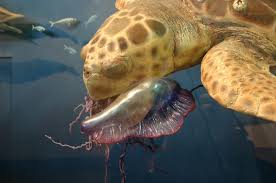
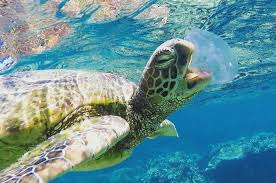
Range/Distribution
Flatback sea turtles have the smallest geographic range of all sea turtle species, found only in the coastal waters of northern Australia, southern Indonesia, and southern Papua New Guinea. Unlike other sea turtles, they do not have an oceanic phase or migrate long distances across open waters. Instead, they remain on the continental shelf, staying in relatively shallow waters less than 200 feet deep.
Flatbacks prefer turbid inshore waters, bays, coastal coral reefs, and grassy shallows. All life stages—from hatchlings to adults—are spent in these nearshore environments. Nesting occurs exclusively on the northern coast of Australia, making this species one of the most regionally restricted sea turtles in the world.
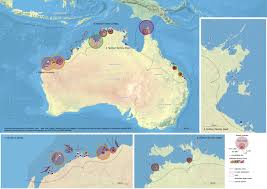
Lifespan/Reproduction
Flatback sea turtles reach sexual maturity at around 15 to 20 years old and return to nest every two to four years. Unlike other sea turtles that lay hundreds of eggs per clutch, flatbacks lay fewer but larger eggs, averaging about 50 to 70 per nest. These eggs, roughly the size of billiard balls, weigh around 70-80 grams each and take about 55 to 60 days to incubate. The hatchlings are also larger than those of other sea turtle species, measuring about 6 cm at birth, which may give them a better chance of survival against predators.
Nesting occurs exclusively in Australia, with the largest concentration of females found on Crab Island in Queensland’s Gulf of Carpentaria. Other primary nesting beaches stretch across Queensland, the Northern Territory, and Western Australia. During a single nesting season, females typically lay two to four clutches, returning to the shore multiple times. Unlike other sea turtle species that travel long distances after hatching, flatback hatchlings stay closer to shore in their early life, likely due to their preference for feeding in shallow, soft-bottomed waters.
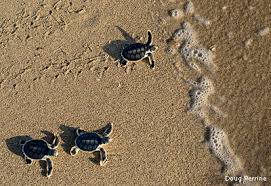
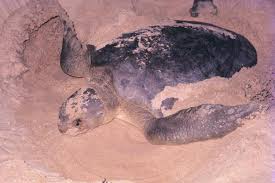
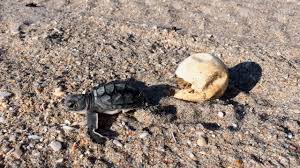
Threats
Flatback sea turtles face numerous threats, both natural and human-induced. Historically, predators like dingoes and foxes posed a major risk to their nests, but thanks to predator control programs, this danger has been significantly reduced. However, flatback eggs and hatchlings are still vulnerable to predation by sand monitor lizards, birds such as night herons and pelicans, and feral pigs, which can devastate nesting sites by consuming nearly all available eggs in some areas. Flatback turtles are also preyed upon by saltwater crocodiles, which has also had a large impact on their species numbers.
In addition to natural predators, human activities are a major concern for flatback populations. Like other sea turtles, they are threatened by direct harvesting for their meat and eggs, entanglement in fishing gear, and pollution, including oil spills and marine debris. Coastal development continues to destroy important nesting beaches, while damage to coral reefs and shallow feeding areas further impacts their survival. Scientists still have limited data on flatback population trends, making it difficult to determine their conservation status. While they are classified as “vulnerable” by the Australian government, it is likely that they face similar risks as other sea turtle species, many of which are endangered. Since only a tiny fraction of hatchlings naturally survive to adulthood, the added pressures of human activities make conservation efforts even more critical. Continued research and monitoring are essential to protecting this unique species and ensuring its survival for future generations.
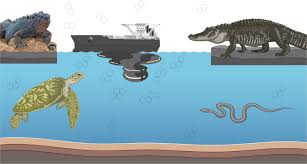
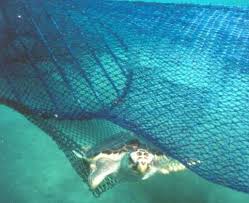
Flatback sea turtles may not be as famous as some of their relatives, but they are just as important to marine ecosystems. Their preference for shallow coastal waters makes them more vulnerable to human activities, from habitat destruction to accidental bycatch. Despite being one of the least-studied sea turtle species, ongoing conservation efforts aim to better understand their behaviors and protect their nesting beaches. By raising awareness and supporting conservation programs, we can help ensure that flatbacks continue to thrive in their native Australian waters. Whether through reducing plastic pollution, supporting marine protected areas, or simply learning more about these unique turtles, every effort counts. The more we know about flatbacks, the better equipped we are to protect them for generations to come.
